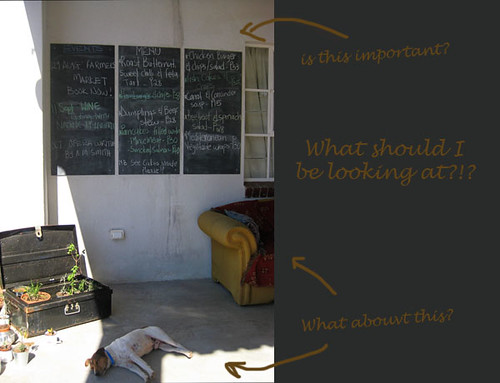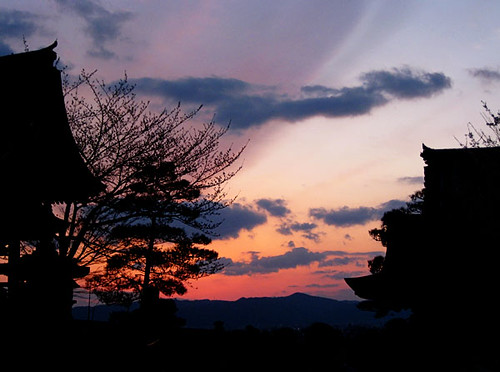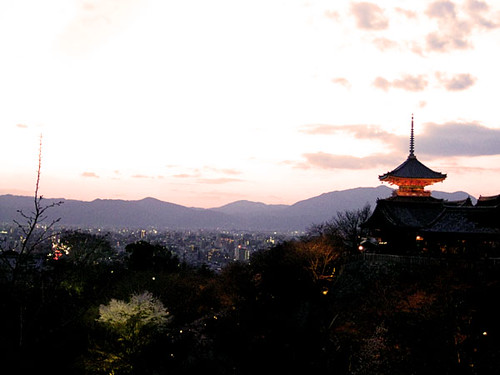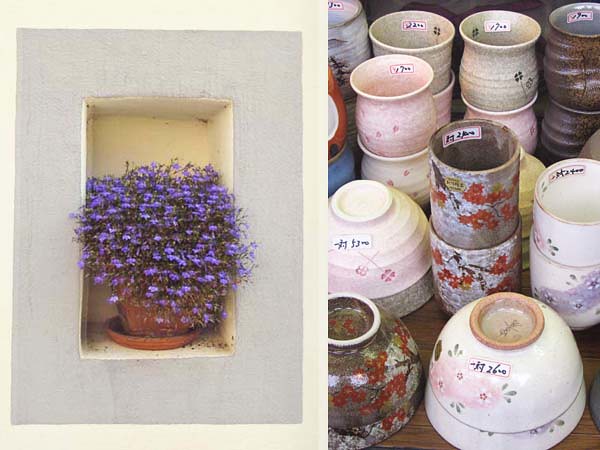This week we're talking about composition. Composition is the corner-stone of photography. Get composition right and your 50% of the way to a good photo. Seriously. And that's before we've started considering light and what fancy camera you've got in your hand.
As I mentioned last week, I still love my little point-and-shoot camera for its versatility. I can pop it in even my tiniest of handbags and go out for the night without worrying about someone sitting on it, dropping my handbag or scratching my DSLR lens. I can give it to a stranger to take a photograph without them freaking out at the 'huge scary camera with lots of buttons'. And it takes good pictures. The only draw-back is that it's much less forgiving when you (the photographer) take a crappy shot. You've got to think a lot more about composition as there's no blurring out a distracting background or using a lovely depth of field to enhance the shot. Composition counts. The good news is composition is also easy - anyone can do it.
Today we're going to go over five basic rules of composition. There are no secrets here, google "composition" and eventually you'll come back to these five little gems. But use them and your photos will look better overnight. In the next few weeks we'll dive deeper in the the rule of thirds and non-traditional composition techniques but these five rules will take you a long way on their own.
And because I'm all about trying to prove a point, I went through my archives and found examples that were taken with my Canon Powershot.
And because I'm all about trying to prove a point, I went through my archives and found examples that were taken with my Canon Powershot.
Remove the Clutter: Blurring the background is one way to do it, but the best way is to remove the mess before you take the shot. DLR cameras can often achieve this through manipulating the depth-of-field, but with P&S cameras you need to make sure that you frame the shot without that car, light switch, electricity pole etc etc. Keep it simple and your eyes won't get confused and will naturally be drawn to the subject.
In the photo above, it's not clear what you should look at - there are lots of different elements in the shot and because of the difficult shadow , your eyes don't naturall "rest" anywhere.
Now, I'm not suggesting the second photo is perfect. That harsh shadow and the over-exposed concrete are down-right distracting - but by moving slightly to the right, getting down low and zooming in on the dog and "trunk garden", it's a lot easier to focus.
Frame your subject: I love taking photographs of landscapes and cities that I visit, but the photos aren't always that interesting. When you get home all you have is a cityscape without any "story". Give these shots a story by framing the landscape - it doesn't have to be much, sometimes all you need is a branch or roof to give the photo context and make it more interesting.
Now, I'm not suggesting the second photo is perfect. That harsh shadow and the over-exposed concrete are down-right distracting - but by moving slightly to the right, getting down low and zooming in on the dog and "trunk garden", it's a lot easier to focus.
Frame your subject: I love taking photographs of landscapes and cities that I visit, but the photos aren't always that interesting. When you get home all you have is a cityscape without any "story". Give these shots a story by framing the landscape - it doesn't have to be much, sometimes all you need is a branch or roof to give the photo context and make it more interesting.
Horizon: Another quick and easy tip for making landscape shots more appealing is to make sure your horizon isn't smack bang in the middle of your photo. It's tempting to do this because that's what you think your eyes see. But your brain doesn't like symmetry (mostly). Put your horizon 1/3rd from the bottom or 1/3rd from the top. It's pretty easy to do, just tilt you camera up or down a little depending on what you want to emphasise (the sky or the ground). These photos look much better on a black background, but you get the idea.
The alternative to doing it 'in-camera', is to re-compose the shot in the post-processing stage by cropping your photo to achieve the proportions that you want.
Rule of Thirds: This is as technical as this post is going to get. The 'rule of thirds' is the corner-stone of all 2-D art from the 17th centrary masters to today's photographers and artists. Our eyes like asymmetry. Sometimes all it takes to transform a photo from mediochre to good, is a little cropping using the rule of thirds. Divide your photo to thirds. Your main subject should roughly fall into these boxes. I plan to go into this aspect of composition in more detail later, but this should be enough to get you going.Here the right-hand side of the photograph contains the foreground image and the rest of the photo is left to the background.
Here the photo is divided into the water and silhouette and the rocks at approximately the third lines.
Next week: Shutter speed

Fill the Frame: Do you remember your art teacher in primary school insisting that you paint all over the paper, not just in one corner? Well, turns out s/he was right. Fill the frame with your subject. Don't be afraid to get in close, or to crop your photos once you've taken them. This is very similar to 'removing the clutter', but by filling the frame you are directing peoples eyes to what you want them to see, not the background. Tell a story, one photo at a time.
Rule of Thirds: This is as technical as this post is going to get. The 'rule of thirds' is the corner-stone of all 2-D art from the 17th centrary masters to today's photographers and artists. Our eyes like asymmetry. Sometimes all it takes to transform a photo from mediochre to good, is a little cropping using the rule of thirds. Divide your photo to thirds. Your main subject should roughly fall into these boxes. I plan to go into this aspect of composition in more detail later, but this should be enough to get you going.
Here the photo is divided into the water and silhouette and the rocks at approximately the third lines.
That's all for this week. Think about composition as you take your photos. Tilt your camera to change the horizon line, zoom in and fill the frame, practice the rule of thirds. It doesn't take much, but these little tips will enhance your photographs whatever camera you use.
Next week: Shutter speed















8 comments:
Ohhh I am learning so much! Thanks for those amazing tips:)
Happy Monday...How is the weather in your part of Europe?
Kisses
yay - thanks for the tips, please keep them coming!! :)
wow! what a fantastic tutorial thankyou for sharing that! I bought the canon powershot for my bag as it has manual on it but the trouble is it's so tiny that it takes me ages to set it all up and it's so fiddly but it is good to always have a point and shoot in your bag.
a really great tutorial on composition!
great post! and lovely photos, of course!
Another great post! If it's just me, I am good about removing clutter. It's just when I'm photographing people, I forget everything.
More amazing tips! Thanks so much.
What a fantastic post! I am always despairing about my pictures on my Point and Shoot and keep thinking I need a bigger flashier camera but if I can change the way Im using this one, I think it will help a lot. I look forward to reading your next photography post. Thank you!
Post a Comment